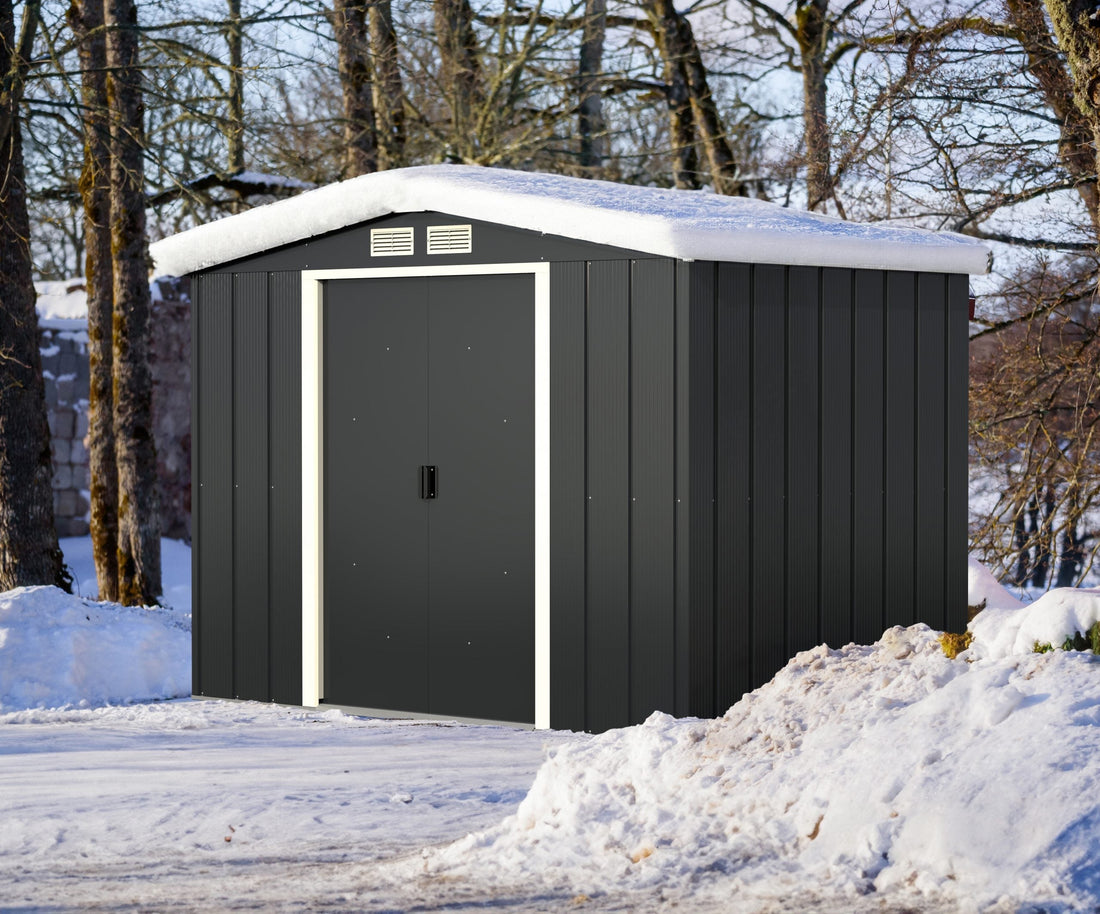Know All About Snow loads And Weather-Proof Metal Sheds

Winter is the magical year of the time, but it comes when it’s at its extreme, there are significant losses. According to data, winter storms caused $2.1 billion insured losses, which includes structural damages.
Hence, it’s crucial we understand the potential odds and be prepared to prevent any losses to your property and assets. The continuous snowfall makes a thick layer of snow on the structures, which affects the structural integrity of the shed, and sometimes structures can't stand the weight and collapse.
So, it is necessary to know about the snow loads and possible ways to avoid the damage.
Snow Loads
Snow loads are the weight of snow on the shed, pressurizing the roof structure. Generally, constructional loads are divided into two categories. Snow loads are the live loads, which are temporary and variable. On the other hand, dead loads are the weight of the permanent component of the structure.
Here are some important aspects of Snow Loads.
Moisture in Snow:
Wet snow weighs way more than dry snow. Western regions have dry and lighter snow. However, the eastern part of the nation witnesses moist snowfall. Typically, snow’s water content varies from 5% to 32%.
Very wet snow can weigh seven times more than dry powdery snow. So, you may consider the moisture content while considering the snow loads.
Snow Accumulation:
You may track the accumulation on your shed and remove it before it exceeds your shed’s tolerance. When your shed already has a thick layer of snow, then 2″ can devastate your structure.
Distribution:
Snow doesn’t need to be uniformly accumulated on your shed, and it causes the uneven distribution of load on the shed. This way, the most stressed part can get damaged and open your valuables to several risks. The heavy window also causes the uneven distribution of snow and makes drifts near roof valleys, dormers, chimneys, etc.
Weather:
Rain can worsen the situation because it increases the weight of the ice. Moreover, if the temperature goes down during the rain, then the water gets refrozen in the crystals.
Generally, one inch of snow weighs about 1 pound per square foot. Whereas one inch of ice weighs five pounds per square foot.
These are some variables that change your roof snow loads on the shed. Engineers analyze the above factors and some aspects of your shed to conclude the snow loads and build a safe structure.
However, many states have already done this and have some strict wind/snow load ratings that your construction must follow.
Snowfall-Safe Metal Buildings
You may first need to choose a building type to construct your shed.You always want a structure that has convenient features to safeguard your assets from dense snowfall.
Steel buildings are the prevalent shed option for the best weather safety.
Even building experts recommend the steel buildings for the dense snowfall areas.
Best Resilience and Endurance:
Steel has the highest strength among construction materials, and that’s why you get the most secure shed with metal buildings. Moreover, we employ heavy-duty steel to manufacture your sheds to bestow the best quality possible and ensure the safety of your belongings.
Hence, steel buildings can withstand the extreme pressure of adverse weather and can house all your requirements safely.
Durable Galvanized Steel:
Generally, metals are prone to rust. As the building will be in contact with snow and ice, there are high chances of rusting, but not with the galvanized steel buildings. In order to resolve this rust issue, we galvanize the steel panels, in which process a zinc layer is coated on the panels. Zinc prevents oxidation on the steel panels and prevents rust. The oxidation reaction is a prerequisite to cause rust. So, you don’t have to worry about corrosion or rust, and your steel building will effectively protect you for decades.
All Vertical Metal Buildings:
It is a premium steel building design,especially for heavy snowfall areas. These buildings come with vertical panel pitched roofs that don’t allow snow accumulation. The vertical panels and slope doesn’t give the grip to the snow, and it slides down due to its own inertia.
These are the safest steel buildings for harsh weather conditions, and you must consider the all-vertical metal buildings to ensure the best safety of your valuables and family.
This is all about the snow loads and all-weather steel buildings. You may consider the snow loads and steel buildings to have a safe shed for your requirements. So, book your building today!

